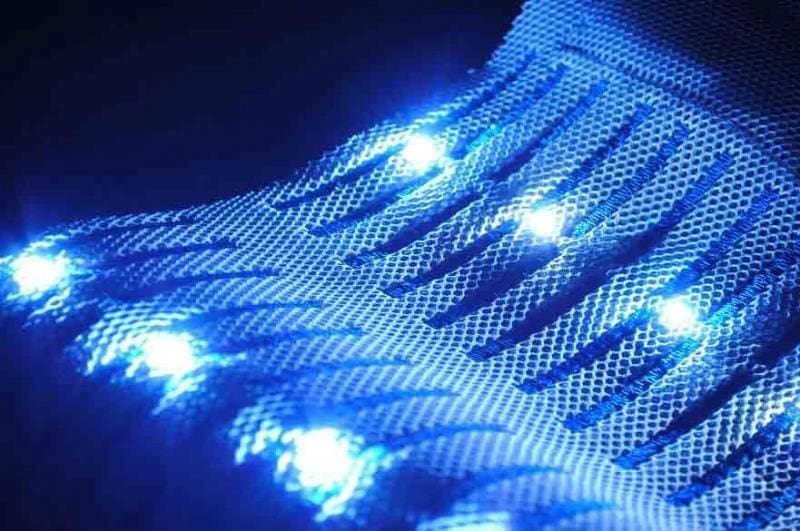Abstract
Electronic textiles are part of electronic components that create systems capable of sensing, heating, lighting or transmitting data. E-textiles will have an important role to play in the fields of medicine, safety and protection. Currently, the industry is still emerging, and companies interested in this area will improve their chance of success if they are aware of the challenges they face from technical, business, regulatory and marketing perspectives.
Introduction
Electronic textile is a fabric that can conduct electricity. Electronic textiles are fabrics that have electronics and interconnections woven into them. Components and interconnections are a part of the fabric and thus are much less visible and, more importantly, not susceptible to becoming tangled together or snagged by the surroundings. An electronic textile refers to a textile substrate that incorporates capabilities for sensing, communication, power transmission, and interconnection technology to allow sensors or things such as information processing devices to be networked together within a fabric. Electronic textiles allow little bits of computation to occur on the body. They usually contain conductive yarns that are either spun or twisted and incorporate some amount of conductive material to enable electrical conductivity.
The first category involves mounting classical electronic devices such as conducting wires, ICs, LEDs and conventional batteries into garments.
The second category involves creating electronic function directly on the textile fibres . These functions can either be passive such as pure wires, conducting textile fibres , or more advanced functions such as transistors, diodes and solar cells. The field of embedding advanced electronic components onto textile fibres is sometimes referred to as fibertronics.
The most common approach to e-textiles today comprise the first category, which is technically the most simple approach, and where even a number of commercial products exists such as textiles with incorporated LED components.
Construction of electronic function on textile fibres requires the use of conducting and semi-conducting materials. There are a number of commercial fibres today that include metallic fibres mixed with textile fibres to form conducting fibres that can be woven or sewn. However as both metals and classical semiconductors are stiff material they are not very suitable for textile fibre applications where fibres are subjected to large stretch and bending during use.
Another class of electronic materials which is more suitable for e-textiles is the class of organic electronics materials. As organic electronic materials can be both conducting, semiconducting and designed as inks and plastics . They are more suitable for making electronic fibres.
Some of the most advanced functions that have been demonstrated in the lab to date include:
- organic fibre transistors , this is the first textile fibre transistor that is completely compatible with textile manufacturing .
- Organic solar cell on fibres.
Benefits of e-textiles
Electronic textiles, or e-textiles, are a new emerging inter disciplinary field of research, bringing together specialists in information technology, microsystems , materials, and textiles. E-textiles offers the following advantages:
- Flexible
- No wires to snag environment
- Large surface area for sensing
- Invisible to others
- Cheap manufacturing
Properties of E-textiles
Electrical properties
Conductivity is the most important factor. Electrical resistance low enough to allow a flow of electric energy, such as for power or data transmission, is critical. Metal, carbon, or optical fibres are typically well-known conductors.
Conductive yarns are either pure metal yarns or composites of metals and textiles. Metals are superior in strength and fineness, and textiles are selected for comfort. In order to produce a successful conductive yarn, the best mix of conductive and non-conductive materials is critical.
Future
The field of fibertronics becomes more mature, the hybrid structures will include more electronic functionality at the fibre level, until we eventually end up with electronic textiles where all advanced electronic function, such as batteries, lightning, communication and computing is all embedded in the textile fibres.
Reference links
Electronic Textile – an overview | ScienceDirect Topics
e-Textiles | List of High Impact Articles | PPts | Journals | Videos (scitechnol.com)
E-textiles and the future of wearable technology – Advanced Textiles Source

